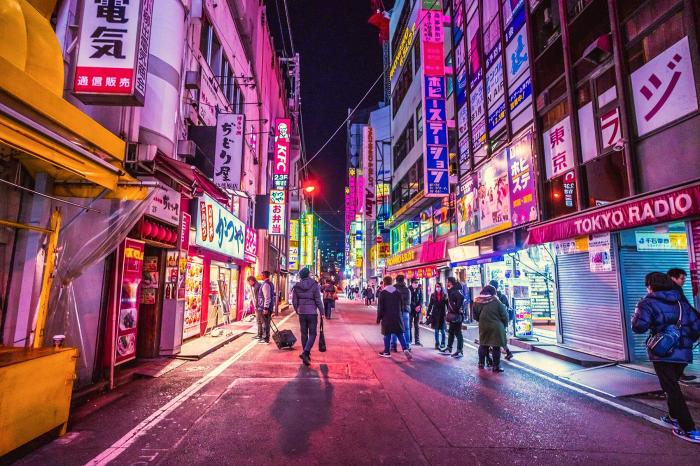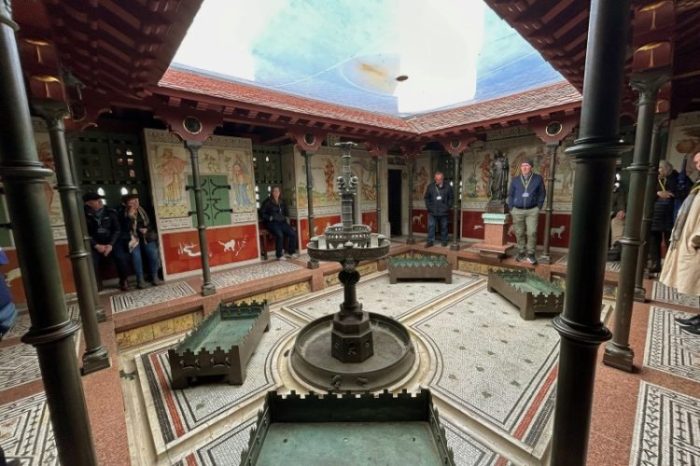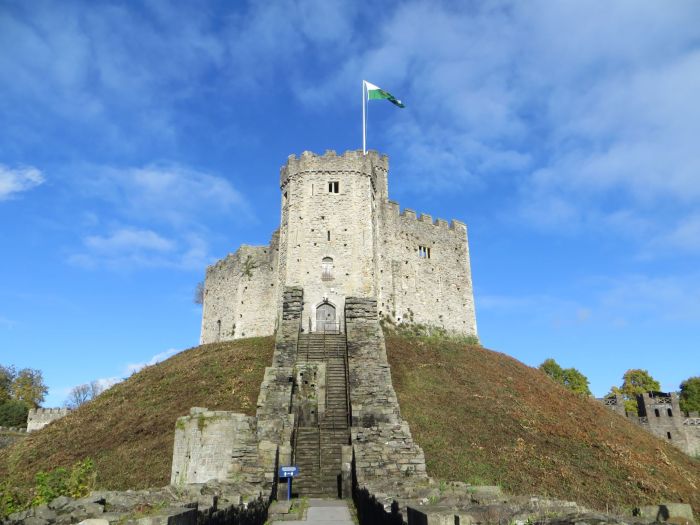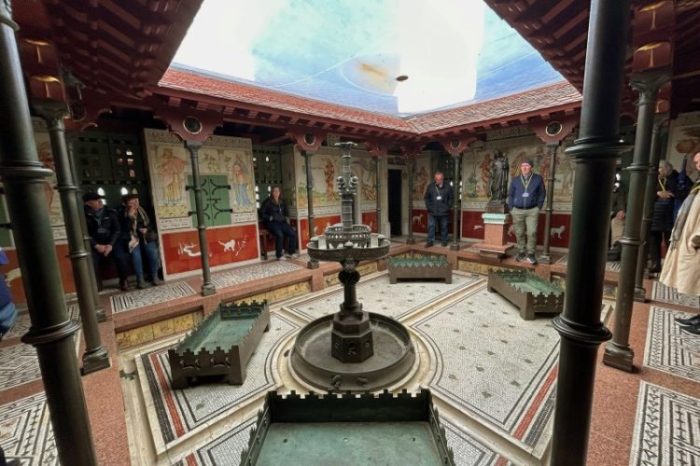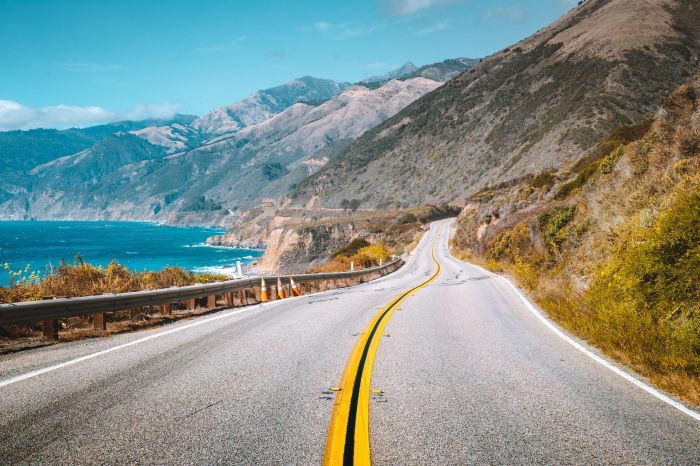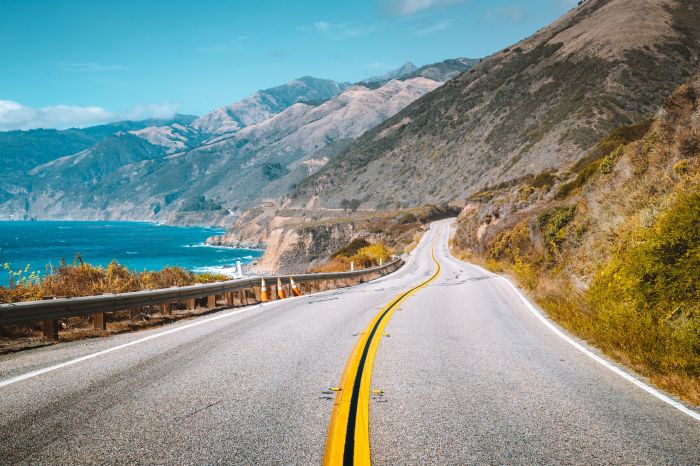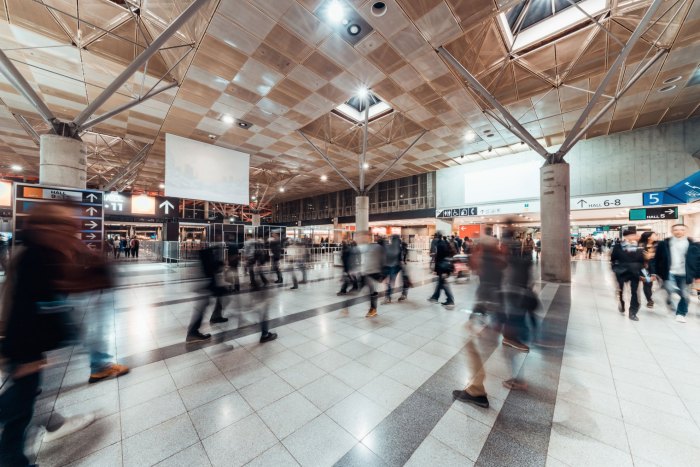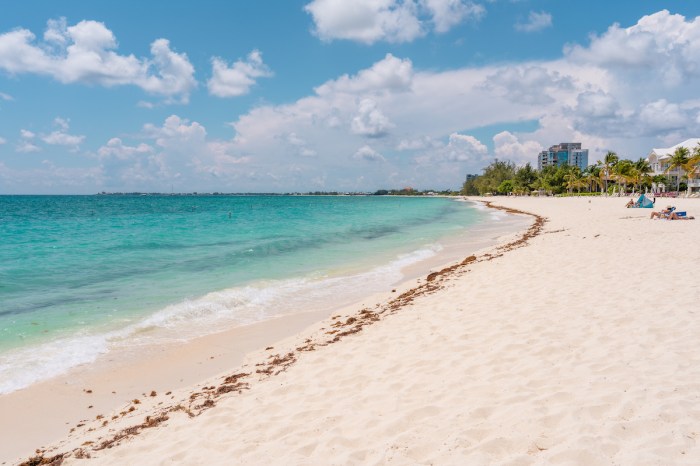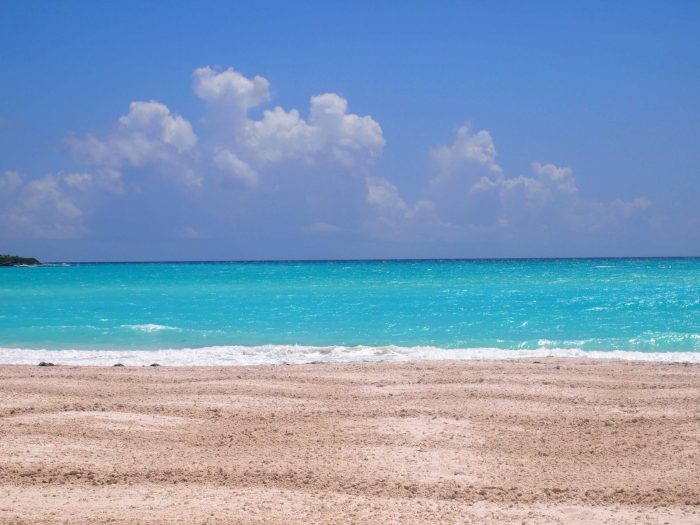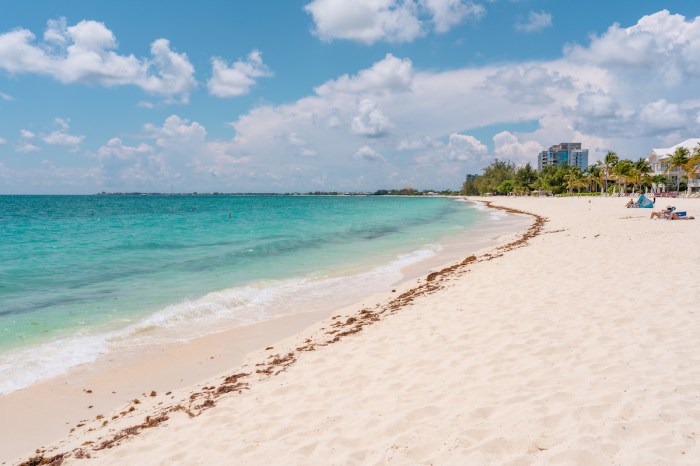Best museums in Belfast offer a captivating journey through history, art, and culture. From the awe-inspiring Titanic Belfast to the rich collections of the Ulster Museum, Belfast’s museums provide a diverse and engaging experience for visitors of all ages and interests. This guide explores the city’s top museums, delving into their unique exhibits, historical significance, and practical information for planning your visit.
This comprehensive overview covers a range of museums, including those specializing in history, art, science, and local culture. We’ll explore their individual strengths and weaknesses, offering insights into the overall visitor experience. Expect detailed information on opening hours, ticket prices, and accessibility features to help you plan your museum adventure.
Introduction to Belfast Museums
Belfast’s museum scene offers a fascinating journey through history, art, and science. From the city’s turbulent past to its vibrant contemporary culture, these institutions provide a rich tapestry of experiences for visitors of all ages. The diverse collection of museums reflects Belfast’s unique identity and its place as a melting pot of cultures and histories.The museums in Belfast cater to a wide range of interests, ensuring something for everyone.
Whether you’re a history buff, an art enthusiast, or a science aficionado, you’re sure to find a museum that sparks your curiosity and provides an engaging learning experience. The city’s museums aim to educate and inspire, creating an atmosphere that fosters appreciation and understanding.
Types of Museums in Belfast
Belfast boasts a variety of museums, each offering a unique perspective on the city’s history and culture. These include historical museums, art galleries, and science centres. The historical museums delve into the city’s past, tracing its development from ancient times to the present day. Art galleries showcase a diverse range of artistic styles and periods, reflecting the city’s artistic evolution and cultural influences.
Science centres provide interactive exhibits that make learning about science fun and engaging for visitors of all ages.
Visitor Experience and Atmosphere
The atmosphere within Belfast’s museums is generally welcoming and engaging. The museums strive to create an environment that encourages exploration and interaction with the exhibits. Often, they incorporate interactive displays and educational programs, making learning enjoyable and accessible for all visitors. Many museums are designed with accessibility in mind, accommodating visitors with diverse needs. This inclusivity is a hallmark of the city’s commitment to providing a positive and enriching experience for everyone.
Museum Comparison Table
This table compares the opening hours and ticket prices for some key museums in Belfast. It is important to note that opening hours and prices are subject to change, so always confirm details directly with the museum.
| Museum | Opening Hours | Ticket Prices (Adults) |
|---|---|---|
| Ulster Museum | Monday-Saturday: 10:00 AM – 5:00 PM; Sunday: 11:00 AM – 5:00 PM | £8.00 |
| National Museums Northern Ireland | Monday-Saturday: 10:00 AM – 4:00 PM; Sunday: 12:00 PM – 4:00 PM | £7.00 |
| Titanic Belfast | Daily: 9:00 AM – 6:00 PM | £20.00 |
| The MAC Belfast | Tuesday-Sunday: 10:00 AM – 5:00 PM; Monday Closed | £10.00 |
Top-Rated Museums in Belfast
Belfast boasts a vibrant cultural scene, and its museums are a testament to this. From captivating historical displays to interactive science experiences, the city’s museums offer diverse perspectives and enriching learning opportunities. These institutions play a crucial role in preserving the city’s heritage and engaging visitors with its unique stories.Exploring these museums reveals a wealth of information about Belfast’s past, present, and future.
Belfast’s museums are fantastic, offering a great variety of exhibits. While you’re planning your trip, consider grabbing a great deal on a new travel duffel bag. There are some amazing sales on the Walmart Gonex travel duffel bag right now, perfect for transporting all your museum-hopping essentials. Walmart Gonex travel duffel bag sale This way, you’ll be ready to explore more of the city’s fascinating history and culture, after you’ve checked out the latest deals on the perfect bag for your trip!
Each museum, while unique in its focus, contributes to the overall understanding of the city’s evolution and the experiences of its people.
Identifying Top Museums
Belfast’s museum landscape features several institutions, but based on visitor numbers, critical acclaim, and public engagement, five stand out as top-rated: the Ulster Museum, the Titanic Belfast, the Crumlin Road Gaol, the National Museum of Ireland – Northern Ireland, and the Linen Hall Library. These institutions consistently rank high due to their compelling exhibitions, informative displays, and engaging visitor experiences.
Unique Exhibitions and Collections
Each of these top museums showcases distinctive collections and exhibitions. The Ulster Museum, for example, offers a broad spectrum of natural history, archaeology, and cultural exhibits. The Titanic Belfast focuses specifically on the history of the ill-fated ship, with immersive displays and interactive exhibits. Crumlin Road Gaol provides a chilling glimpse into the past through its detailed accounts of prison life.
The National Museum of Ireland – Northern Ireland presents a balanced view of the region’s history and culture. The Linen Hall Library provides insight into the history of linen and textile production in Northern Ireland.
Strengths and Weaknesses of Top Museums
The Ulster Museum excels in its breadth of collections, but may occasionally lack the immersive, thematic experiences offered by some of the more specialized museums. Titanic Belfast is renowned for its engaging and interactive displays, but might be considered somewhat limited in its scope compared to other museums with broader historical perspectives. Crumlin Road Gaol’s powerful narrative is complemented by its unique setting, but its focus on a single theme may not appeal to all visitors.
The National Museum of Ireland – Northern Ireland presents a balanced approach, but may not have the same degree of interactive exhibits as other institutions. The Linen Hall Library is excellent for its unique focus on the linen industry, but might need more diverse displays to cater to a broader audience.
Key Exhibits by Museum
| Museum | Key Exhibits |
|---|---|
| Ulster Museum | Prehistoric collections, natural history displays, and diverse cultural artifacts. |
| Titanic Belfast | The iconic ship’s history, detailed exhibits on the construction and sinking, and interactive experiences. |
| Crumlin Road Gaol | Detailed accounts of prison life, historical documents, and personal stories from prisoners. |
| National Museum of Ireland – Northern Ireland | Historical artifacts and exhibitions showcasing the region’s rich heritage and culture. |
| Linen Hall Library | Historical documents and exhibits focusing on the linen industry and textile production. |
Ulster Museum: A Journey Through Northern Ireland’s History and Culture

The Ulster Museum, a cornerstone of Belfast’s cultural scene, offers a comprehensive exploration of Northern Ireland’s rich history and diverse natural world. Established in 1869, it has evolved into a leading museum showcasing significant collections spanning millennia. Its impressive range of exhibits provides a captivating insight into the region’s past and present.
Belfast boasts some incredible museums, perfect for a day trip or a longer exploration. From the fascinating history of the Titanic to the vibrant contemporary art scene, there’s something for everyone. If you’re looking for a unique experience beyond the city’s museums, consider checking out Dollywood, Dolly Parton’s incredible theme park in the USA, Dolly Parton America Dollywood.
It’s a great way to experience a different side of American culture, and it’s certainly worth considering if you’re a fan of the theme park experience or a Dolly Parton enthusiast. Back in Belfast, you’ll find a wealth of museums to immerse yourself in the city’s unique story.
Historical Significance and Foundation
The Ulster Museum’s establishment stemmed from a desire to create a repository for the artifacts and specimens collected by the Ulster Archaeological Society. Its initial focus was on showcasing the region’s archaeological treasures, but over time, it expanded to encompass natural history, anthropology, and art. The museum’s significant role in preserving and presenting Northern Ireland’s cultural heritage has solidified its position as a vital resource for both locals and visitors.
Key Collections
The museum boasts an array of significant collections, each contributing to a comprehensive understanding of the region. A highlight is the impressive collection of prehistoric artifacts, providing a glimpse into the lives of early inhabitants. The ethnographic displays showcase the diverse cultures and traditions of different communities, while the collection of natural history specimens provides a rich insight into the region’s flora and fauna.
Museum Sections and Focus
The Ulster Museum is divided into distinct sections, each dedicated to a particular area of study. The archaeology section, for example, houses artifacts from various periods, from Stone Age tools to medieval weaponry. The natural history section showcases a remarkable collection of specimens, from minerals and fossils to animal skeletons and botanical displays. The anthropology section features items and artifacts related to the diverse cultures that have interacted with the region throughout history.
The art collection is a diverse range of paintings, sculptures, and decorative arts from Northern Ireland and around the world.
Educational Programs and Initiatives
The Ulster Museum actively engages with the community through a variety of educational programs. These programs include workshops, lectures, and family-friendly activities designed to foster an appreciation for history, science, and culture. The museum also offers tailored educational resources for schools and community groups, aiming to enrich learning experiences and encourage a deeper understanding of the exhibits.
Artifacts Displayed: A Summary
| Category | Examples |
|---|---|
| Prehistoric Artifacts | Stone tools, pottery, skeletal remains |
| Archaeological Finds | Medieval weaponry, coins, jewelry |
| Natural History Specimens | Minerals, fossils, animal skeletons, botanical specimens |
| Anthropological Collections | Artifacts from various cultures, traditional costumes, tools |
| Artworks | Paintings, sculptures, decorative arts, photographs |
The table above provides a brief overview of the diverse range of artifacts on display. Each category offers a unique perspective on the history, culture, and natural world of Northern Ireland. This comprehensive approach allows visitors to gain a deeper understanding of the region’s past and present.
Specific Museum Focus: Titanic Belfast
Titanic Belfast, a beacon of maritime history and a must-see attraction in Belfast, immerses visitors in the story of the ill-fated RMS Titanic. Beyond simply showcasing artifacts, the museum crafts an experience that transcends mere observation, engaging all the senses to bring the ship and its passengers vividly to life. It’s a powerful testament to the grandeur and tragedy of the era.
Unique History of Titanic Belfast
Titanic Belfast was meticulously crafted to celebrate the iconic ship and the people connected to it. The museum’s design is a stunning architectural feat, inspired by the ship’s iconic hull and incorporating modern interactive technology to enhance the visitor experience. The museum’s narrative encompasses not only the engineering marvels of the Titanic but also the lives of the diverse individuals who sailed on her maiden voyage.
The exhibition doesn’t shy away from the human cost of the tragedy, offering a poignant and comprehensive portrayal of the ship and the era.
Museum Exhibits and Interactive Elements, Best museums in belfast
The museum’s exhibits are meticulously designed to captivate visitors through various interactive displays. From recreations of the ship’s grand halls to interactive touchscreens that delve into the lives of passengers and crew, visitors are immersed in a journey that is both informative and engaging. The museum employs a variety of technologies, including virtual reality and augmented reality, to provide visitors with a truly immersive experience.
Belfast’s museums are fantastic, offering a rich history. Thinking about a change of pace? If you’re looking for a luxurious escape, consider the Tryall Club in Jamaica. Their hotels and resorts offer unparalleled experiences. hotels resorts tryall club jamaica private provide a truly unforgettable stay, but when you return, Belfast’s museums will still be waiting, brimming with fascinating exhibits.
These interactive elements create a dynamic atmosphere, allowing visitors to virtually step aboard the ship and explore different sections.
Stories of the Ship and its Passengers and Crew
Titanic Belfast doesn’t just present facts; it weaves stories. The museum showcases artifacts like personal belongings, letters, and photographs, giving visitors a glimpse into the lives of the passengers and crew. The stories are brought to life through meticulously researched narratives, bringing the ship’s passengers and crew from anonymous figures to real individuals with their hopes, dreams, and fears.
For instance, exhibits dedicated to the ship’s builders and the skilled workforce involved in its construction offer a comprehensive perspective on the human element behind the ship’s creation.
Visitor Engagement Strategies
Titanic Belfast employs a multifaceted approach to engage visitors. The museum strategically uses storytelling, interactive displays, and immersive environments to captivate visitors of all ages. The layout of the exhibits is designed to guide visitors through a chronological journey, allowing them to experience the story of the Titanic from its conception to its tragic end. The museum also offers various educational programs and workshops to enhance the visitor experience.
These programs provide additional context and allow visitors to delve deeper into specific aspects of the Titanic story.
Contrast with Other Maritime Museums
| Feature | Titanic Belfast | Other Maritime Museums (General) |
|---|---|---|
| Focus | Specific ship, human stories, immersive experience | Broader maritime history, ship types, technological advancements |
| Exhibits | Interactive, multi-sensory, detailed recreations | Often more static displays, documents, models |
| Visitor Experience | Immersive, engaging, storytelling-driven | Often more academic, factual-oriented |
| Target Audience | Broad audience, families, history enthusiasts | Specialized interest groups, scholars, history enthusiasts |
Titanic Belfast differentiates itself from other maritime museums through its unique focus on the human stories intertwined with the ship’s history. While other museums might showcase a broader range of maritime history, Titanic Belfast prioritizes the emotional connection to the Titanic and its passengers, creating a truly immersive experience.
Museums for Different Interests

Belfast’s museums offer something for everyone, from history buffs to art enthusiasts and families seeking engaging experiences. Beyond the iconic Titanic Belfast, a wealth of lesser-known gems awaits discovery, each with its unique perspective on the city and beyond. These museums cater to diverse interests, ensuring a memorable and educational journey for all visitors.
Museums for Children and Families
Belfast offers a range of museums specifically designed to engage and educate young visitors. These venues often incorporate interactive exhibits, making learning fun and memorable. The focus is on creating an environment that fosters curiosity and encourages exploration. Many museums have dedicated family-friendly areas, including playgrounds, storytelling sessions, and special events. This ensures that both children and parents can enjoy the experience.
- The Ulster Museum features interactive displays and dedicated children’s areas. The museum’s extensive collection, covering natural history, archaeology, and culture, provides a wealth of knowledge for all ages.
- The Crumlin Road Gaol offers a fascinating glimpse into Ireland’s past, with displays focusing on crime, justice, and social history. While the subject matter might be somewhat sensitive, the museum presents it in a way that is both informative and engaging for all ages, highlighting the societal context of the time.
Museums Focusing on Local History
Museums dedicated to local history offer a unique opportunity to delve into the city’s past and uncover the stories of Belfast’s communities. These institutions often feature exhibits that explore the city’s development, from its earliest settlements to its modern identity.
- The Crumlin Road Gaol is a powerful testament to Belfast’s past, providing a poignant and detailed account of the justice system and social conditions during specific historical periods. The museum’s exhibits and stories evoke the realities of life in the city at that time.
- The Linen Hall Library, although not a museum in the traditional sense, houses a significant collection of local historical documents, including manuscripts, maps, and photographs. These archives provide a wealth of primary source material for researchers and enthusiasts interested in Belfast’s history. The library provides access to resources beyond the physical exhibits.
Museums Showcasing Contemporary Art and Culture
Belfast’s contemporary art scene is vibrant and dynamic, with museums showcasing a wide array of artistic expressions. These venues often feature exhibitions that explore the city’s modern identity and engage with global perspectives.
- The MAC (Belfast’s Municipal Art Collection) presents a diverse range of contemporary art, with exhibitions spanning various styles and media. The collection evolves regularly, showcasing the dynamism of the local and international art scenes.
Museums Focusing on Specific Themes (e.g., Science, Technology)
Museums dedicated to science and technology offer interactive displays and exhibits, fostering an understanding of scientific principles and technological advancements. These museums often encourage hands-on learning, allowing visitors to engage with concepts in a tangible way.
- The Ulster Museum has a significant section dedicated to natural history, including fascinating displays on the local flora and fauna. The museum showcases the region’s biodiversity and geological history, allowing visitors to explore the natural world.
Best Museums for Different Age Groups
| Age Group | Recommended Museums |
|---|---|
| Children (5-12) | Ulster Museum, Crumlin Road Gaol (with appropriate guidance) |
| Teenagers (13-18) | Ulster Museum, Titanic Belfast, Crumlin Road Gaol |
| Adults | All museums, depending on individual interests |
Practical Information for Visitors: Best Museums In Belfast
Planning a trip to Belfast’s museums? This section provides essential details on reaching these fascinating institutions, parking, accessibility, and dining options nearby. Knowing these practicalities will enhance your experience and make navigating the city’s cultural scene a breeze.This guide Artikels the various transportation methods available, parking options, accessibility features, and food and beverage choices near each museum, ensuring a smooth and enjoyable visit for everyone.
Getting There: Transportation Options
Belfast’s museums are strategically located to be easily accessible by various transportation methods. Public transport is readily available, making it convenient for visitors.
- Belfast has an extensive bus network that connects most areas of the city. Bus routes are frequently updated and can be checked online for the most up-to-date information.
- The city’s metro system provides a rapid and efficient way to travel between different parts of the city. Check the metro website for schedules and routes.
- Taxis and ride-sharing services are readily available and provide a convenient way to reach the museums. Factor in potential surge pricing during peak hours or special events.
- Walking is a fantastic way to explore the city center. Many museums are located within walking distance of each other and other attractions.
Parking Options
Parking availability near Belfast’s museums can vary depending on the time of day and the specific location. Some museums have dedicated parking lots, while others are located in areas with limited parking.
- Check the individual museum websites for information on specific parking arrangements. Many museums have parking garages or lots in close proximity.
- Street parking is another option, but it can be limited and may require payment. Consider using parking apps to locate available spaces and check pricing.
- Public parking garages are available in the city center. Their locations and pricing vary.
- Consider utilizing ride-sharing services as an alternative if parking proves challenging.
Accessibility Features
Belfast’s museums are committed to providing accessible experiences for all visitors. Detailed information on accessibility features is available on the individual museum websites.
- Wheelchair accessibility is a priority at all museums. Ramps, elevators, and accessible restrooms are commonly provided.
- Sign language interpreters and audio guides are available at many museums for those with hearing impairments.
- Braille materials and large-print options are available for visitors with visual impairments.
- Sensory rooms or designated quiet spaces may be available at some museums to accommodate visitors with sensory sensitivities.
Food and Beverage Options
A variety of food and beverage options are available near Belfast’s museums. Whether you’re seeking a quick bite or a full meal, the city offers a diverse range of choices.
- Cafes, restaurants, and pubs are located near many of the museums. Choose from traditional Irish cuisine, international dishes, or quick snacks.
- Supermarkets and convenience stores offer various options for grabbing a meal or snacks to take with you to the museum.
- Consider pre-planning your meals to avoid last-minute rushes or long queues.
- Check the individual museum websites for details on specific food and beverage services available within the museum premises.
Summary Table: Transportation and Parking
| Museum | Transportation Options | Parking Details |
|---|---|---|
| Ulster Museum | Bus, Metro, Taxi, Walking | Limited street parking, nearby garages |
| Titanic Belfast | Bus, Metro, Taxi, Walking | Dedicated parking lot, street parking |
| [Other Museum Name] | [Transportation Options] | [Parking Details] |
Future of Belfast Museums
Belfast’s museums, renowned for their historical depth and cultural significance, are poised for exciting developments in the coming years. The city’s rich tapestry of heritage, coupled with a growing emphasis on innovation and engagement, promises a vibrant and dynamic future for these institutions. These museums are more than just repositories of the past; they are vital hubs for community interaction and educational enrichment.The future direction of Belfast museums will be characterized by a multifaceted approach, embracing technological advancements, exploring new collaborations, and introducing innovative ways to engage with diverse audiences.
This will ensure the continued relevance and accessibility of these invaluable cultural resources.
Potential Collaborations
Belfast’s museums stand to gain significantly from collaborations with other institutions. Partnerships with local universities and colleges can facilitate joint research projects, student internships, and the development of new educational programs. Collaborations with tourism boards and local businesses can create synergistic opportunities to enhance the visitor experience and boost the local economy. For instance, the Ulster Museum could partner with the Titanic Belfast to create joint exhibitions exploring the impact of maritime history on Northern Ireland’s identity.
Technological Advancements
The integration of technology is crucial for the future success of Belfast’s museums. Interactive displays, virtual reality experiences, and augmented reality applications can enhance visitor engagement and understanding. Digital archives and online resources can broaden accessibility, allowing visitors from around the world to explore the city’s history and culture. Museums could also leverage digital storytelling platforms to create engaging narratives around historical artifacts.
This could involve creating interactive timelines or personal accounts of individuals who lived through significant historical periods.
Potential New Exhibits and Attractions
Future exhibits could focus on contemporary issues and evolving cultural trends. An exhibit exploring the influence of Irish music on global culture could attract a wider audience. A new exhibit focused on the history of women in Belfast, featuring their contributions to various fields, could provide a more inclusive and nuanced perspective. The introduction of temporary exhibitions on specific themes, perhaps relating to Belfast’s industrial past or its role in the arts scene, would add vibrancy to the museums’ offerings.
Table of Potential Future Exhibits and Developments
| Museum | Potential Exhibit/Development | Target Audience | Expected Impact |
|---|---|---|---|
| Ulster Museum | Interactive exhibit on the evolution of Irish language and literature | Students, language enthusiasts, and general public | Enhance understanding of linguistic and literary history; increase engagement with heritage |
| Titanic Belfast | Virtual reality experience recreating life on the Titanic | History buffs, families, and tourists | Immersive and engaging experience; attract a broader demographic |
| National Museums of Northern Ireland | Joint exhibition with local artists on contemporary art | Art enthusiasts, students, and community members | Showcase contemporary art alongside historical pieces; foster community engagement |
| Belfast City Hall | Interactive display on the history of Belfast’s political landscape | Students, historians, and general public | Offer a deeper understanding of Belfast’s political evolution |
Visual Representation of Belfast Museums
Belfast’s museums offer a captivating journey through history and culture, each with its own unique visual identity. From the grand architecture of the Ulster Museum to the modern design of Titanic Belfast, these spaces are carefully crafted to enhance the visitor experience and immerse them in the stories they hold. Their exterior designs, interior layouts, and meticulously curated exhibits combine to create an atmosphere that is both engaging and thought-provoking.The visual presentation of these museums is not merely decorative; it is an integral part of the museum’s mission to educate and inspire.
The careful selection of materials, colours, and spatial arrangements all contribute to the overall atmosphere, encouraging deeper engagement with the exhibits and the narratives they tell.
Exterior Architecture
The museums showcase a variety of architectural styles reflecting their historical context and purpose. The Ulster Museum, for example, features a grand, imposing facade, reminiscent of classical architecture. Its limestone exterior and imposing columns create a sense of historical weight and significance. Titanic Belfast, on the other hand, boasts a sleek, modern design, reflecting the era of the Titanic and the maritime heritage of Belfast.
Its distinctive exterior, with its large windows and glass panels, emphasizes the importance of light and transparency in showcasing its exhibits. Other museums may blend different styles or adopt contemporary designs.
Interior Layout
The internal layouts of the museums are strategically designed to enhance the visitor experience. The Ulster Museum’s layout is largely chronological, allowing visitors to trace Northern Ireland’s history from prehistoric times to the present day. This clear structure facilitates a logical journey through time and culture. Titanic Belfast, on the other hand, uses a more interactive and thematic approach, guiding visitors through the story of the Titanic’s construction, maiden voyage, and tragic end.
These different approaches reflect the unique narratives of each museum and the different ways they engage with their audiences.
Key Exhibits
Each museum features a selection of key exhibits that highlight specific aspects of its collection. The Ulster Museum’s collection features a rich array of artefacts, including a remarkable collection of prehistoric tools and Irish manuscripts. These exhibits are carefully displayed and accompanied by informative labels. Titanic Belfast showcases artifacts related to the Titanic, including sections of the ship’s hull, life jackets, and personal belongings of passengers and crew.
The museum also uses interactive displays and digital media to enhance the visitor’s understanding of the tragic event.
Atmosphere and Ambiance
The atmosphere and ambiance of each museum are carefully crafted to create a specific mood and enhance the visitor experience. The Ulster Museum evokes a sense of reverence and historical importance, with its quiet, thoughtful environment. Titanic Belfast, in contrast, creates a more vibrant and engaging atmosphere, filled with the energy of the era and the drama of the story.
These contrasting environments reflect the different collections and the different narratives that the museums aim to convey.
Table of Key Exhibits
| Museum | Exhibit | Description | Image |
|---|---|---|---|
| Ulster Museum | Prehistoric Tools | A comprehensive collection of prehistoric tools from various periods, providing insight into the early human settlements of Ireland. | (Imagine a photo of meticulously displayed stone tools, accompanied by detailed labels.) |
| Ulster Museum | Irish Manuscripts | A significant collection of Irish manuscripts, showcasing the rich literary and historical heritage of Ireland. | (Visualize a photo of illuminated manuscripts displayed under appropriate lighting, with protective coverings.) |
| Titanic Belfast | Sections of the Ship’s Hull | Authentic sections of the Titanic’s hull, providing a tangible connection to the ship and its tragic fate. | (Imagine a photo of a significant portion of the Titanic’s hull, displayed in a way that highlights its historical context.) |
| Titanic Belfast | Interactive Displays | Interactive displays and digital media that offer a detailed account of the Titanic’s construction, maiden voyage, and final moments. | (Picture a photo of an interactive touch screen, showing information related to the Titanic’s journey.) |
Ending Remarks
Belfast’s museums are a testament to the city’s rich heritage and vibrant cultural scene. From the poignant stories of the Titanic to the fascinating exhibits at the Ulster Museum, there’s something for everyone. This guide provides a comprehensive overview, allowing you to discover the best museums in Belfast and create lasting memories. So, pack your bags and get ready to explore the captivating world of Belfast’s museums!





